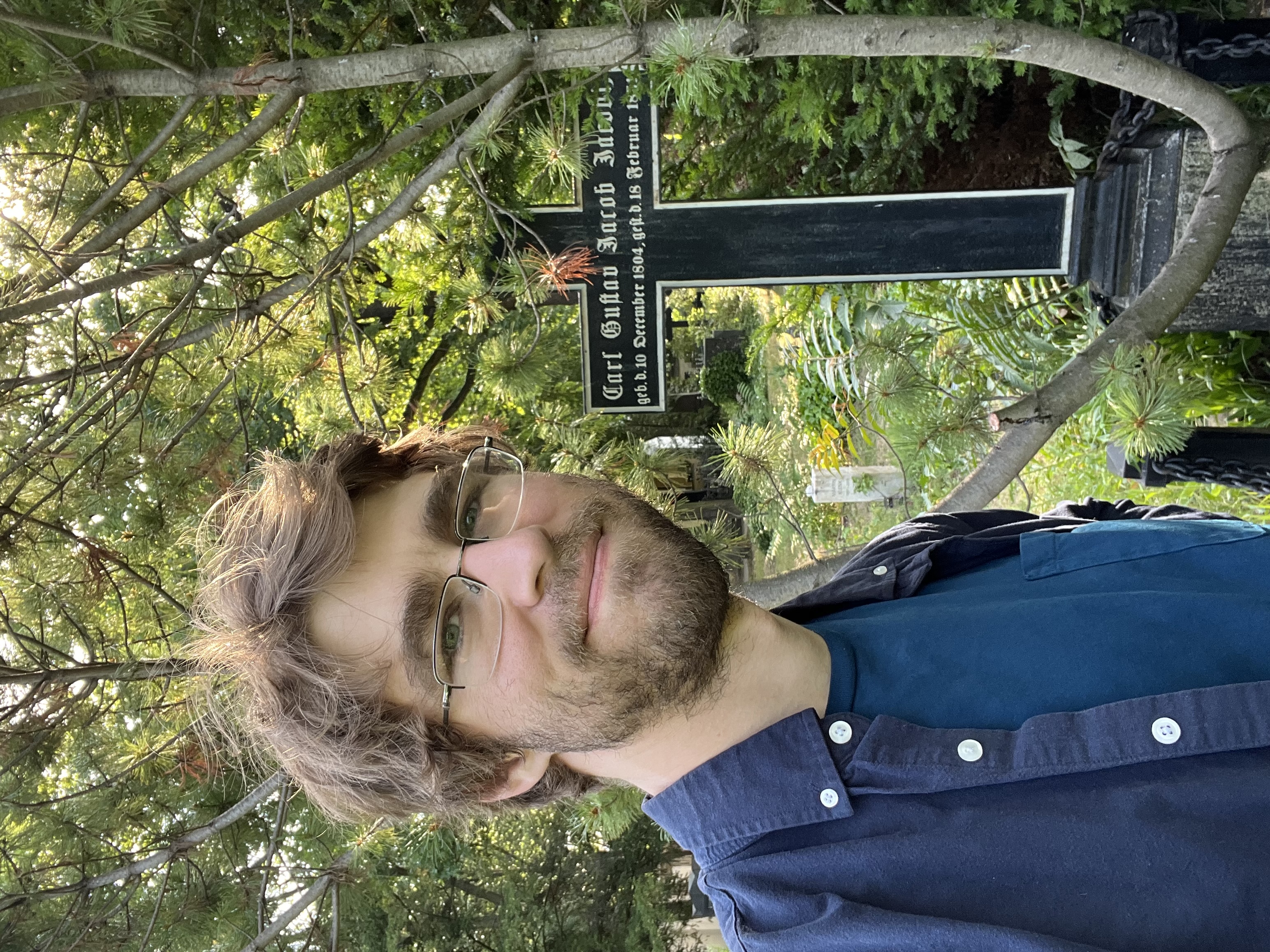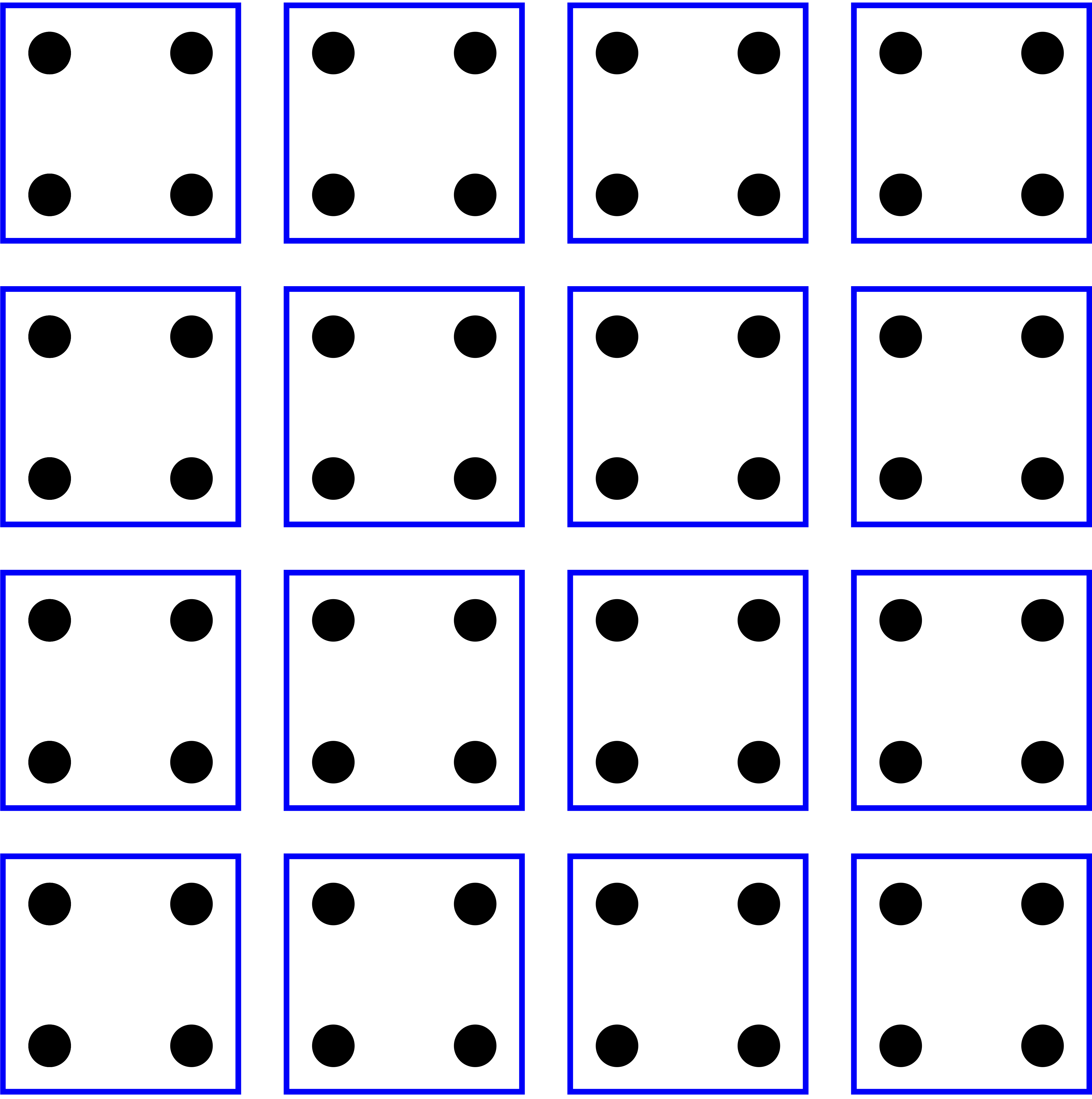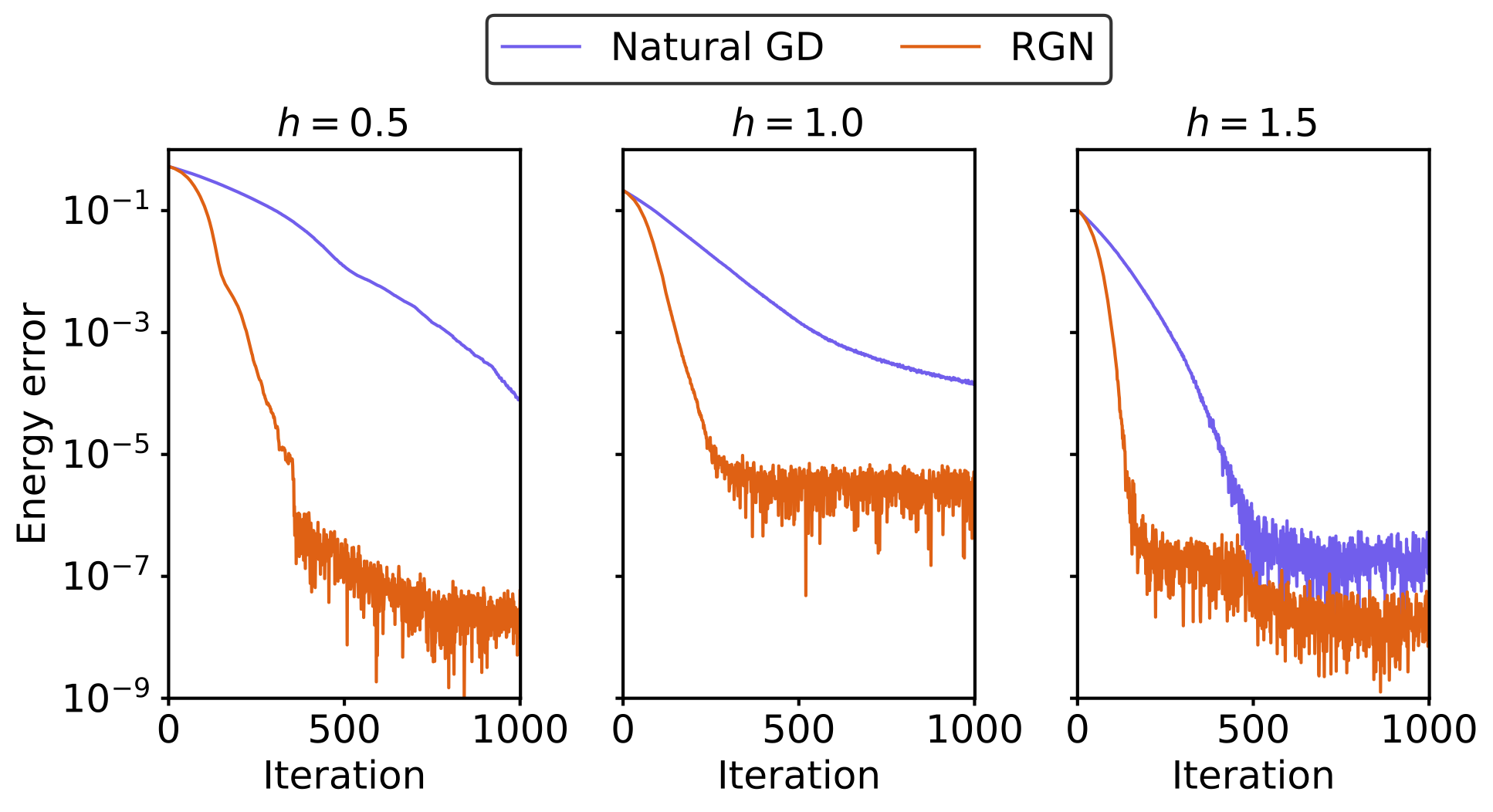Email: lastname at berkeley dot edu
Background. For many intractable optimization problems, it is possible to formulate
a convex relaxation by making use of simple structure in the objective function. Examples range from combinatorial optimization problems (such as the famous Max-Cut problem)
to the problem of determining the ground state energy of a quantum many-body system, which is of fundamental importances in
quantum chemistry and condensed matter physics. Relaxations are derived by writing down necessary constraints satisfied by
some reduced variable in the original problem. Often the resulting problem has the structure of
a semidefinite program (e.g., the Goemans-Williamson algorithm for Max-Cut and the 2-RDM theories of quantum chemistry).
Adaptive diagonal basis sets for electronic structure
Toward optimal-scaling DFT: stochastic Hartree theory in the thermodynamic and complete basis set limits at arbitrary temperature
UC Berkeley
Here is a list of what I read in graduate school, which may suggest
some interesting resources.
Two views on optimal transport and its numerical solution (2015).
My undergraduate thesis (supervised by Yanir Rubinstein
and Rafe Mazzeo),
which presented two new formulations of optimal transport problems leading to two corresponding methods for numerically solving them.
This thesis won the Kennedy Thesis Prize for the top undergraduate thesis in the natural sciences at Stanford.
Michael Lindsey
Office: 1089 Evans Hall
Background: I am an Assistant Professor in the Department of Mathematics at UC Berkeley, as well as a
Faculty Scientist in the Mathematics Group at Lawrence Berkeley National Laboratory.
Here is my CV (9/2024).
Research interests: I work on computational methods driven by numerical linear algebra, optimization, and randomization, with a special focus on
high-dimensional scientific computing problems. These include quantum many-body
problems arising in quantum chemistry and condensed matter physics, as well as various problems in applied probability. Approaches draw on a wide variety of
techniques including semidefinite relaxation, Monte Carlo sampling, and optimization over parametric function classes such as tensor networks and neural networks.
For an introduction to quantum many-body physics written for an applied math audience, see
my dissertation (8/2019) and in particular the first part.
Also see this talk for a tutorial on many-body perturbation theory and Green's
function methods.
News: I am a 2024 Hellman Fellow. And see this
profile of me.
HDSC Seminar
I run an informal seminar on high-dimensional scientific computing. Here is the page for Spring 2025.
Past semesters: [Spring 2024] [Fall 2023]
Research directions
Click titles to expand. More coming soon!
Convex relaxations and semidefinite programming
Quantum marginals.
We have introduced a new type of 'quantum marginal' relaxation for quantum many-body problems and
developed a scalable solver for it. This relaxation carries the interpretation of a
quantum embedding theory (see Quantum embedding below), which motivates the solver.
Classical marginals.
The aforementioned 'quantum marginal' relaxation extends preceding work on a classical marginal
relaxation for
discrete multi-marginal optimal transport problems. With a multiscale approach,
we have extended this classical marginal relaxation to solve general continuous global optimization problems with pairwise structure, which include
sensor network localization and optimal molecular configuration problems.
General semidefinite programming. More broadly I am interested in optimization for general SDP, particularly
with low-rank structure.
Quantum embedding
 Pictured:
A partition of a lattice system into disjoint fragments.
Pictured:
A partition of a lattice system into disjoint fragments.
Background. The fundamental difficulty of quantum
many-body problems is that the complexity of the quantum wavefunction grows exponentially
with the number of particles in the system. Recently, quantum embedding theories have made
progress in addressing this difficulty by dividing systems into smaller fragments, which
can themselves be treated with an accurate 'high-level' theory, perhaps even implemented on
a quantum computer! These local problems are coupled together
self-consistently via some coarse global physical quantities.
Variational embedding. Our recently introduced
variational embedding theory is the
first embedding theory which provides a guaranteed bound
on the ground-state energy. However, in its original formulation as an abstract semidefinite
program, the theory is hard to solve numerically. By making use of quantum embedding
intuition, we have introduced a scalable solver for
this semidefinite program. This approach solves effective 'high-level' local problems in parallel,
where the effective problems are
determined self-consistently by updates that enforce coarse global constraints.
Other embedding methods.
I have also worked on improving the scaling and robustness of existing quantum embedding
theories, including density matrix embedding theory (DMET)
and dynamical mean-field theory (DMFT). I am also interested in
improving the mathematical understanding of impurity problems,
which are the embedded subproblems in DMFT, as well as DMFT itself.
High-dimensional functions
 Pictured:
The Rayleigh-Gauss-Newton (RGN) method exhibits fast
convergence for the 1D transverse-field Ising model, maintained through the quantum phase transition at h=1.
Pictured:
The Rayleigh-Gauss-Newton (RGN) method exhibits fast
convergence for the 1D transverse-field Ising model, maintained through the quantum phase transition at h=1.
Background. Many scientific computing problems can be viewed as optimization problems
over functions on high-dimensional state spaces (discrete or continuous). Such problems include the ground-state
eigenvalue problem for quantum many-body problems, as well as the problem of computing committor functions to
characterize reaction pathways in computational chemistry. A well-chosen parametric class of functions
(such as a tensor network or neural network parametrization) can make such an optimization problem
tractable.
Variational Monte Carlo. Variational Monte Carlo (VMC) tackles the ground-state quantum
many-body problem by optimizing the energy over a parametric class of wavefunctions. Parameter updates must
be computed by sampling configurations according to the Born rule for the wavefunction.
Recently, we introduced a Rayleigh-Gauss-Newton approach to VMC optimization which improves
on existing methods for recently introduced neural-network-based parametrizations.
High-dimensional probability. The committor function is a fundamental object in the study of rare transitions
between metastable states of a stochastic process. We recently showed that tensor networks can
be used to compute committor functions in high dimensions, allowing us to examine rare transitions in a 1D Ginzburg-Landau theory.
Monte Carlo sampling
 Pictured:
Mean-field dynamics for an ensemble sampler.
Pictured:
Mean-field dynamics for an ensemble sampler.
Monte Carlo sampling is the most flexible and widely-used tool for estimating sums and integrals in high dimensions.
It plays a supporting role in Variational Monte Carlo (see High-dimensional functions above), where
efficient sampling is crucial for wavefunction optimization. Conversely, parametric function classes can support the goal of Monte Carlo sampling. Some results in this area
should be coming soon!
I am also interested in generic sampling problems. We introduced an
ensemble MCMC sampler that can circumvent slow
mixing due to metastability.
Many-body Green's functions
 Pictured:
Bold Feynman diagram expansion for the GW approximation to the Luttinger-Ward functional.
Pictured:
Bold Feynman diagram expansion for the GW approximation to the Luttinger-Ward functional.
Background.
Beyond the single-particle picture of density functional theory (DFT), many of the most
widely used computational methods in quantum many-body physics are based on the formalism
of Green's functions, which encode response and excitation properties of a system. Many-body
perturbation theory (MBPT), which expands quantities of interest perturbatively in
the strength of the inter-particle interaction, defines a major category of approaches to computing
Green's functions. The terms in this expansion correspond to the so-called
bare Feynman diagrams. These can in turn be reorganized into a series of bold Feynman diagrams.
These objects can be understood in terms of a construction called the Luttinger-Ward (LW) functional.
But the construction is only formal, and recently the existence
of a single-valued LW functional has been cast into doubt by theoretical and numerical evidence.
Euclidean lattice field theory.
We have rigorously justified the LW formalism in the context of Euclidean
lattice field theory. In particular, we have rigorously justified the
combinatorial arguments underlying the
bold diagrammatic expansion, constructed the LW functional via a
non-perturbative argument, and
and proved that the bold diagrammatic expansion forms an asymptotic series for the
LW functional.
DMFT. The dynamical mean-field theory (DMFT) is a quantum embedding
theory in which Green's functions play a central role. See Quantum embedding above for further
details on theoretical and practical work in this area.
Selected presentations
Expand
SciCADE (July 2024)
[slides]
Direct interpolative construction of quantized tensor trains
Tensor4All Meeting (April 2024)
[slides]
Interacting ensemble MCMC and fast entropically regularized SDP
Mathematics of Data and Decisions at UC Davis (MADDD) Seminar (November 2023)
[slides]
Efficient sampling for lattice QMC
Julian Schwinger Foundation Workshop on the Fermion Sign Problem (July 2023)
[slides]
Scalable variational embedding for quantum many-body problems
SIAM Conference on Mathematical Aspects of Materials Science (May 2021)
[slides]
Optimization for variational Monte Carlo with neural quantum states
Modeling and Simulation Group Seminar: Machine Learning in Science at NYU (April 2021)
[slides]
Optimal transport via a Monge-Ampère optimization problem
SIAM Conference on the Mathematics of Data Science (May 2020)
[slides]
Toward sharp error analysis of extended Langrangian molecular dynamics for polarizable force field simulation
Ki-Net Young Researchers Workshop (October 2019)
[slides]
Semidefinite relaxation of multi-marginal optimal transport, with application to strictly correlated electrons in second quantization
ICIAM (July 2019)
[slides]
A classical statistical mechanics approach to understanding Green's function methods and the Luttinger-Ward formalism
Oberwolfach (March 2018)
[slides]
Adaptive compression for Hartree-Fock-like equations
SIAM Conference on Applied Linear Algebra (May 2018)
[slides]
Publications and preprints
with Yuhang Cai
[arXiv:2504.15816]
[code]
Geometric adaptive smoothed aggregation multigrid for discontinuous Galerkin discretisations
Yulong Pan, Michael Lindsey, and Per-Olof Persson
[arXiv:2504.13373]
[code]
Fast and accurate interpolative decompositions for general, sparse, and structured tensors
Yifan Zhang, Mark Fornace, and Michael Lindsey
[arXiv:2503.18921]
[code]
Implicit bias of gradient descent for non-homogeneous deep networks
Yuhang Cai, Kangjie Zhou, Jingfeng Wu, Song Mei, Michael Lindsey, and Peter L. Bartlett
[arXiv:2502.16075]
MNE: overparametrized neural evolution with applications to diffusion processes and sampling
Michael Lindsey
[arXiv:2502.03645]
[code]
A gradient-based and determinant-free framework for fully Bayesian Gaussian process regression
with P. Michael Kielstra
[arXiv:2412.20884]
[code]
Fast and spectrally accurate construction of adaptive diagonal basis sets for electronic structure
with Sandeep Sharma
J. Chem. Phys. 161, 214111 (2024)
[journal]
[arXiv:2407.06171]
Gaussian process regression with log-linear scaling for common non-stationary kernels
with P. Michael Kielstra
[arXiv:2407.03608]
[code]
Column and row subset selection using nuclear scores: algorithms and theory for Nyström approximation, CUR decomposition, and graph Laplacian reduction
with Mark Fornace
[arXiv:2407.01698]
[code]
Large stepsize gradient descent for non-homogeneous two-layer networks: margin improvement and fast optimization
Yuhang Cai, Jingfeng Wu, Song Mei, Michael Lindsey, and Peter L. Bartlett
NeurIPS 2024
[conference] [arXiv:2406.08654]
Direct interpolative construction of the discrete Fourier transform as a matrix product operator
with Jielun Chen
[arXiv:2404.03182]
Simple diagonal designs with reconfigurable real-time circuits
Yizhi Shen, Katherine Klymko, Eran Rabani, Norm M. Tubman, Daan Camps, Roel Van Beeumen, and Michael Lindsey
[arXiv:2401.04176]
Multiscale interpolative construction of quantized tensor trains
Michael Lindsey
[arXiv:2311.12554]
Multimarginal generative modeling with stochastic interpolants
with Michael S. Albergo, Nicholas M. Boffi, and Eric Vanden-Eijnden
ICLR 2024
[conference] [arXiv:2310.03695]
Nested gausslet basis sets
Steven R. White and Michael Lindsey
J. Chem. Phys. 159, 234112 (2023)
[journal]
[arXiv:2309.10704]
Fast randomized entropically regularized semidefinite programming
Michael Lindsey
[arXiv:2303.12133]
Understanding and eliminating spurious modes in variational Monte Carlo using collective variables
Huan Zhang, Robert J. Webber, Michael Lindsey, Timothy C. Berkelbach, and Jonathan Weare
Phys. Rev. Research 5, 023101 (2023)
[journal]
[arXiv:2211.09767]
Non-Hertz-Millis scaling of the antiferromagnetic quantum critical metal via scalable Hybrid Monte Carlo
Peter Lunts, Michael S. Albergo, and Michael Lindsey
Nat. Commun. 14, 2547 (2023)
[journal]
[arXiv:2204.14241]
Generative modeling via tensor train sketching
YoonHaeng Hur, Jeremy G. Hoskins, Michael Lindsey, E.M. Stoudenmire, and Yuehaw Khoo
Appl. Comput. Harmon. Anal. 67, 101575 (2023)
[journal]
[arXiv:2202.11788]
Committor functions via tensor networks
with Yian Chen, Jeremy Hoskins, and Yuehaw Khoo
J. Comput. Phys. 472, 111646 (2023)
[journal]
[arXiv:2106.12515]
Rayleigh-Gauss-Newton optimization with enhanced sampling for variational Monte Carlo
Robert J. Webber and Michael Lindsey
Phys. Rev. Research 4, 033099 (2022)
[journal]
[arXiv:2106.10558]
Ensemble Markov chain Monte Carlo with teleporting walkers
with Jonathan Weare and Anna Zhang
SIAM/ASA JUQ 10, 860 (2022)
[journal] [arXiv:2106.02686]
Scalable semidefinite programming approach to variational embedding for quantum many-body problems
with Yuehaw Khoo
J. Comput. Phys. 510, 113041 (2024)
[journal] [arXiv:2106.02682]
Multiscale semidefinite programming approach to positioning problems with pairwise structure
with Yian Chen and Yuehaw Khoo
J. Sci. Comput. 101:42 (2024)
[arXiv:2012.10046]
Towards sharp error analysis of extended Lagrangian molecular dynamics
with Dong An and Lin Lin
J. Comput. Phys. 466, 111403 (2022)
[journal]
[arXiv:2010.07508]
Enhancing robustness and efficiency of density matrix embedding theory via semidefinite programming and local correlation potential fitting
Xiaojie Wu, Michael Lindsey, Tiangang Zhou, Yu Tong, and Lin Lin
Phys. Rev. B 102, 085123 (2020)
[journal]
[arXiv:2003.00873]
(Note: Editor's Suggestion.)
Variational embedding for quantum many-body problems
with Lin Lin
Comm. Pure Appl. Math. 75, 2033 (2022)
[journal] [arXiv:1910.00560]
Efficient hybridization fitting for dynamical mean-field theory via semi-definite relaxation
Carlos Mejuto-Zaera, Leonardo Zepeda-Núñez, Michael Lindsey, Norm Tubman, Birgitta Whaley, and Lin Lin
Phys. Rev. B 101, 035143 (2020)
[journal]
[arXiv:1907.07191]
Semidefinite relaxation of multi-marginal optimal transport for strictly correlated electrons in second quantization
with Yuehaw Khoo, Lin Lin, and Lexing Ying
SIAM J. Sci. Comput. 42, B1462 (2020)
[journal]
[arXiv:1905.08322]
Projected density matrix embedding theory with applications to the two-dimensional Hubbard model
Xiaojie Wu, Zhi-Hao Cui, Yu Tong, Michael Lindsey, Garnet Kin-Lic Chan, and Lin Lin
J. Chem. Phys. 151, 064108 (2019)
[journal]
[arXiv:1905.00886]
Sparsity pattern of the self-energy for classical and quantum impurity problems
with Lin Lin
Ann. Henri Poincaré 21, 2219 (2020)
[journal]
[arXiv:1902.04796]
Bold Feynman diagrams and the Luttinger-Ward formalism via Gibbs measures. Part II: Non-perturbative analysis
with Lin Lin
Arch. Ration. Mech. Anal. 242, 527 (2021)
[journal]
[arXiv:1809.02901]
Bold Feynman diagrams and the Luttinger-Ward formalism via Gibbs measures. Part I: Perturbative approach
with Lin Lin
Arch. Ration. Mech. Anal. 242, 581 (2021)
[journal]
[arXiv:1809.02900]
Variational structure of Luttinger-Ward formalism and bold diagrammatic expansion for Euclidean lattice field theory
with Lin Lin
Proc. Natl. Acad. Sci. 115, 2282 (2018)
[journal]
[.pdf] [supporting info]
Convergence of adaptive compression methods for Hartree-Fock-like equations
with Lin Lin
Comm. Pure Appl. Math. 72, 451 (2019)
[journal] [arXiv:1703.05441]
Optimal transport via a Monge-Ampère optimization problem
with Yanir A. Rubinstein
SIAM J. Math. Anal. 49, 3073 (2017)
[journal] [.pdf]
(Note: recognized with the
SIAM Student Paper Prize.)
On discontinuity of planar optimal transport maps
with Otis Chodosh, Vishesh Jain, Lyuboslav Panchev, and Yanir A. Rubinstein
Journal of Topology and Analysis 07, 239 (2015)
[journal] [arXiv:1312.2929]
(Note: research carried out during
SURIM 2012.)
Infrared imagery of streak formation in a breaking wave
Ivan Savelyev, Robert A. Handler, and Michael Lindsey
Physics of Fluids 24, 121701 (2012)
[journal]
Teaching
Expand
Spring 2024:Math 128B
Fall 2023: Math 228A
Spring 2023: Math 128B
Fall 2022: Math 228A
New York University
Spring 2022: Linear Algebra I (graduate)
Fall 2021: Mathematical Statistics
Spring 2021: Linear Algebra I (graduate)
Fall 2020: Calculus I
UC Berkeley (GSI)
Spring 2018: Math 54, Alexander Paulin [section page]
Spring 2016: Math 53, Denis Auroux [quizzes]
Fall 2015: Math 1B, Ole Hald
Miscellanea
Reading list
Undergraduate research
Expand
[.pdf]
Asymptotics of Hermite polynomials (2015). A largely expository paper
(for a course on orthogonal polynomials) about asymptotics of Hermite polynomials and the Gaussian Unitary Ensemble (GUE).
Presents a result about the stationary states for the quantum harmonic oscillator, which,
though likely nothing new, I think is fairly cool.
[.pdf]
Spectral methods for neural computation (2013/14). A presentation for the
Brains in Silicon
lab outlining some ideas about how favorable Fourier-domain properties of certain neural
tuning curves are naturally suited (in an idealized setting) for the computation of simple functions.
[slides]
3D Shape Understanding Using Machine Learning (2013). A presentation about my
work on using a deep learning framework to perform labeled segmentation of discrete
surfaces and extract multiscale learned shape descriptors. To help with training,
I introduced a new set of shape descriptors based on conformal maps.
[slides]
(Note: research carried out during CURIS
2013 in Stanford's Geometric Computation Group.)
The k-discs algorithm and its kernelization (2012). Introduces and
analyzes an extension of k-means allowing cluster centroids to be discs of
arbitrary dimension, capable of recovering more diverse cluster geometries.
[.pdf]
(Note: class project for CS 229 at Stanford.)